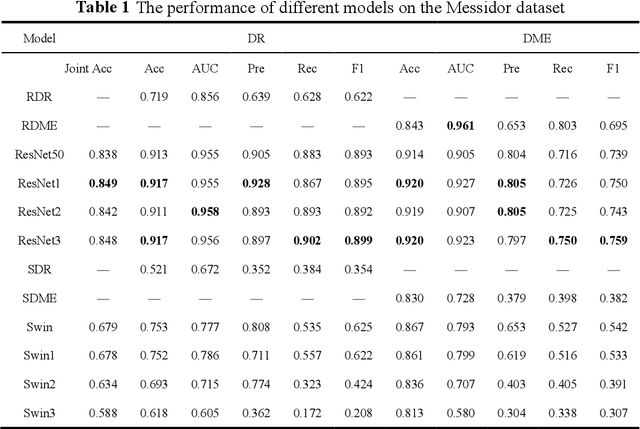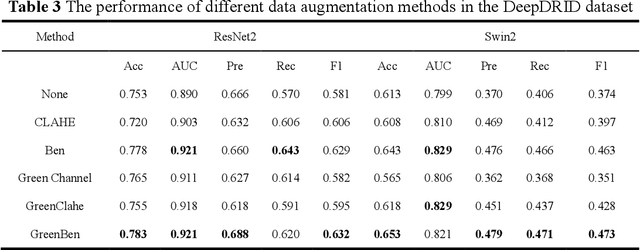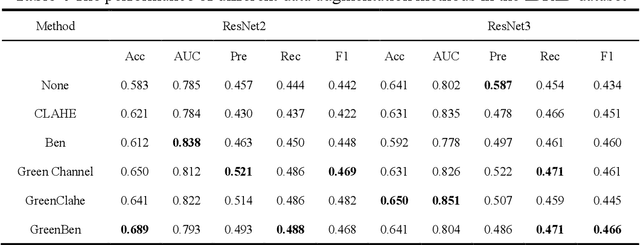Yutong Liu
Listening, Imagining \& Refining: A Heuristic Optimized ASR Correction Framework with LLMs
Sep 18, 2025Abstract:Automatic Speech Recognition (ASR) systems remain prone to errors that affect downstream applications. In this paper, we propose LIR-ASR, a heuristic optimized iterative correction framework using LLMs, inspired by human auditory perception. LIR-ASR applies a "Listening-Imagining-Refining" strategy, generating phonetic variants and refining them in context. A heuristic optimization with finite state machine (FSM) is introduced to prevent the correction process from being trapped in local optima and rule-based constraints help maintain semantic fidelity. Experiments on both English and Chinese ASR outputs show that LIR-ASR achieves average reductions in CER/WER of up to 1.5 percentage points compared to baselines, demonstrating substantial accuracy gains in transcription.
A Comprehensive Evaluation on Quantization Techniques for Large Language Models
Jul 23, 2025Abstract:For large language models (LLMs), post-training quantization (PTQ) can significantly reduce memory footprint and computational overhead. Model quantization is a rapidly evolving research field. Though many papers have reported breakthrough performance, they may not conduct experiments on the same ground since one quantization method usually contains multiple components. In addition, analyzing the theoretical connections among existing methods is crucial for in-depth understanding. To bridge these gaps, we conduct an extensive review of state-of-the-art methods and perform comprehensive evaluations on the same ground to ensure fair comparisons. To our knowledge, this fair and extensive investigation remains critically important yet underexplored. To better understand the theoretical connections, we decouple the published quantization methods into two steps: pre-quantization transformation and quantization error mitigation. We define the former as a preprocessing step applied before quantization to reduce the impact of outliers, making the data distribution flatter and more suitable for quantization. Quantization error mitigation involves techniques that offset the errors introduced during quantization, thereby enhancing model performance. We evaluate and analyze the impact of different components of quantization methods. Additionally, we analyze and evaluate the latest MXFP4 data format and its performance. Our experimental results demonstrate that optimized rotation and scaling yield the best performance for pre-quantization transformation, and combining low-rank compensation with GPTQ occasionally outperforms using GPTQ alone for quantization error mitigation. Furthermore, we explore the potential of the latest MXFP4 quantization and reveal that the optimal pre-quantization transformation strategy for INT4 does not generalize well to MXFP4, inspiring further investigation.
HonestFace: Towards Honest Face Restoration with One-Step Diffusion Model
May 24, 2025Abstract:Face restoration has achieved remarkable advancements through the years of development. However, ensuring that restored facial images exhibit high fidelity, preserve authentic features, and avoid introducing artifacts or biases remains a significant challenge. This highlights the need for models that are more "honest" in their reconstruction from low-quality inputs, accurately reflecting original characteristics. In this work, we propose HonestFace, a novel approach designed to restore faces with a strong emphasis on such honesty, particularly concerning identity consistency and texture realism. To achieve this, HonestFace incorporates several key components. First, we propose an identity embedder to effectively capture and preserve crucial identity features from both the low-quality input and multiple reference faces. Second, a masked face alignment method is presented to enhance fine-grained details and textural authenticity, thereby preventing the generation of patterned or overly synthetic textures and improving overall clarity. Furthermore, we present a new landmark-based evaluation metric. Based on affine transformation principles, this metric improves the accuracy compared to conventional L2 distance calculations for facial feature alignment. Leveraging these contributions within a one-step diffusion model framework, HonestFace delivers exceptional restoration results in terms of facial fidelity and realism. Extensive experiments demonstrate that our approach surpasses existing state-of-the-art methods, achieving superior performance in both visual quality and quantitative assessments. The code and pre-trained models will be made publicly available at https://github.com/jkwang28/HonestFace .
FMSD-TTS: Few-shot Multi-Speaker Multi-Dialect Text-to-Speech Synthesis for Ü-Tsang, Amdo and Kham Speech Dataset Generation
May 20, 2025



Abstract:Tibetan is a low-resource language with minimal parallel speech corpora spanning its three major dialects-\"U-Tsang, Amdo, and Kham-limiting progress in speech modeling. To address this issue, we propose FMSD-TTS, a few-shot, multi-speaker, multi-dialect text-to-speech framework that synthesizes parallel dialectal speech from limited reference audio and explicit dialect labels. Our method features a novel speaker-dialect fusion module and a Dialect-Specialized Dynamic Routing Network (DSDR-Net) to capture fine-grained acoustic and linguistic variations across dialects while preserving speaker identity. Extensive objective and subjective evaluations demonstrate that FMSD-TTS significantly outperforms baselines in both dialectal expressiveness and speaker similarity. We further validate the quality and utility of the synthesized speech through a challenging speech-to-speech dialect conversion task. Our contributions include: (1) a novel few-shot TTS system tailored for Tibetan multi-dialect speech synthesis, (2) the public release of a large-scale synthetic Tibetan speech corpus generated by FMSD-TTS, and (3) an open-source evaluation toolkit for standardized assessment of speaker similarity, dialect consistency, and audio quality.
TiSpell: A Semi-Masked Methodology for Tibetan Spelling Correction covering Multi-Level Error with Data Augmentation
May 14, 2025Abstract:Multi-level Tibetan spelling correction addresses errors at both the character and syllable levels within a unified model. Existing methods focus mainly on single-level correction and lack effective integration of both levels. Moreover, there are no open-source datasets or augmentation methods tailored for this task in Tibetan. To tackle this, we propose a data augmentation approach using unlabeled text to generate multi-level corruptions, and introduce TiSpell, a semi-masked model capable of correcting both character- and syllable-level errors. Although syllable-level correction is more challenging due to its reliance on global context, our semi-masked strategy simplifies this process. We synthesize nine types of corruptions on clean sentences to create a robust training set. Experiments on both simulated and real-world data demonstrate that TiSpell, trained on our dataset, outperforms baseline models and matches the performance of state-of-the-art approaches, confirming its effectiveness.
Kernel Learning Assisted Synthesis Condition Exploration for Ternary Spinel
Mar 25, 2025



Abstract:Machine learning and high-throughput experimentation have greatly accelerated the discovery of mixed metal oxide catalysts by leveraging their compositional flexibility. However, the lack of established synthesis routes for solid-state materials remains a significant challenge in inorganic chemistry. An interpretable machine learning model is therefore essential, as it provides insights into the key factors governing phase formation. Here, we focus on the formation of single-phase Fe$_2$(ZnCo)O$_4$, synthesized via a high-throughput co-precipitation method. We combined a kernel classification model with a novel application of global SHAP analysis to pinpoint the experimental features most critical to single phase synthesizability by interpreting the contributions of each feature. Global SHAP analysis reveals that precursor and precipitating agent contributions to single-phase spinel formation align closely with established crystal growth theories. These results not only underscore the importance of interpretable machine learning in refining synthesis protocols but also establish a framework for data-informed experimental design in inorganic synthesis.
Lumina-Video: Efficient and Flexible Video Generation with Multi-scale Next-DiT
Feb 10, 2025Abstract:Recent advancements have established Diffusion Transformers (DiTs) as a dominant framework in generative modeling. Building on this success, Lumina-Next achieves exceptional performance in the generation of photorealistic images with Next-DiT. However, its potential for video generation remains largely untapped, with significant challenges in modeling the spatiotemporal complexity inherent to video data. To address this, we introduce Lumina-Video, a framework that leverages the strengths of Next-DiT while introducing tailored solutions for video synthesis. Lumina-Video incorporates a Multi-scale Next-DiT architecture, which jointly learns multiple patchifications to enhance both efficiency and flexibility. By incorporating the motion score as an explicit condition, Lumina-Video also enables direct control of generated videos' dynamic degree. Combined with a progressive training scheme with increasingly higher resolution and FPS, and a multi-source training scheme with mixed natural and synthetic data, Lumina-Video achieves remarkable aesthetic quality and motion smoothness at high training and inference efficiency. We additionally propose Lumina-V2A, a video-to-audio model based on Next-DiT, to create synchronized sounds for generated videos. Codes are released at https://www.github.com/Alpha-VLLM/Lumina-Video.
TAR3D: Creating High-Quality 3D Assets via Next-Part Prediction
Dec 22, 2024



Abstract:We present TAR3D, a novel framework that consists of a 3D-aware Vector Quantized-Variational AutoEncoder (VQ-VAE) and a Generative Pre-trained Transformer (GPT) to generate high-quality 3D assets. The core insight of this work is to migrate the multimodal unification and promising learning capabilities of the next-token prediction paradigm to conditional 3D object generation. To achieve this, the 3D VQ-VAE first encodes a wide range of 3D shapes into a compact triplane latent space and utilizes a set of discrete representations from a trainable codebook to reconstruct fine-grained geometries under the supervision of query point occupancy. Then, the 3D GPT, equipped with a custom triplane position embedding called TriPE, predicts the codebook index sequence with prefilling prompt tokens in an autoregressive manner so that the composition of 3D geometries can be modeled part by part. Extensive experiments on ShapeNet and Objaverse demonstrate that TAR3D can achieve superior generation quality over existing methods in text-to-3D and image-to-3D tasks
OSDFace: One-Step Diffusion Model for Face Restoration
Nov 26, 2024



Abstract:Diffusion models have demonstrated impressive performance in face restoration. Yet, their multi-step inference process remains computationally intensive, limiting their applicability in real-world scenarios. Moreover, existing methods often struggle to generate face images that are harmonious, realistic, and consistent with the subject's identity. In this work, we propose OSDFace, a novel one-step diffusion model for face restoration. Specifically, we propose a visual representation embedder (VRE) to better capture prior information and understand the input face. In VRE, low-quality faces are processed by a visual tokenizer and subsequently embedded with a vector-quantized dictionary to generate visual prompts. Additionally, we incorporate a facial identity loss derived from face recognition to further ensure identity consistency. We further employ a generative adversarial network (GAN) as a guidance model to encourage distribution alignment between the restored face and the ground truth. Experimental results demonstrate that OSDFace surpasses current state-of-the-art (SOTA) methods in both visual quality and quantitative metrics, generating high-fidelity, natural face images with high identity consistency. The code and model will be released at https://github.com/jkwang28/OSDFace.
Diabetic retinopathy image classification method based on GreenBen data augmentation
Oct 12, 2024



Abstract:For the diagnosis of diabetes retinopathy (DR) images, this paper proposes a classification method based on artificial intelligence. The core lies in a new data augmentation method, GreenBen, which first extracts the green channel grayscale image from the retinal image and then performs Ben enhancement. Considering that diabetes macular edema (DME) is a complication closely related to DR, this paper constructs a joint classification framework of DR and DME based on multi task learning and attention module, and uses GreenBen to enhance its data to reduce the difference of DR images and improve the accuracy of model classification. We conducted extensive experiments on three publicly available datasets, and our method achieved the best results. For GreenBen, whether based on the ResNet50 network or the Swin Transformer network, whether for individual classification or joint DME classification, compared with other data augmentation methods, GreenBen achieved stable and significant improvements in DR classification results, with an accuracy increase of 10%.
 Add to Chrome
Add to Chrome Add to Firefox
Add to Firefox Add to Edge
Add to Edge